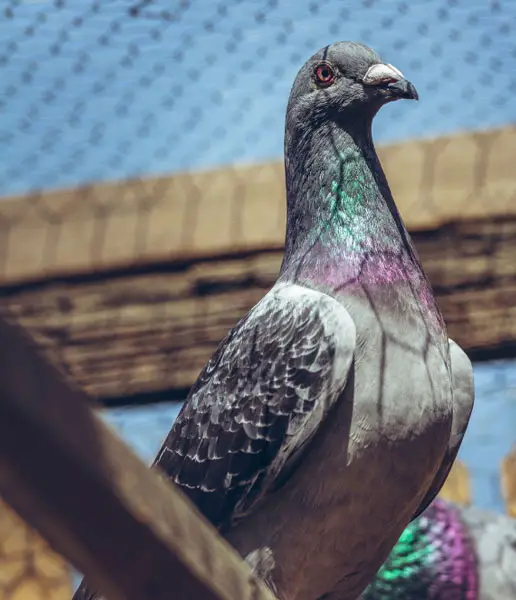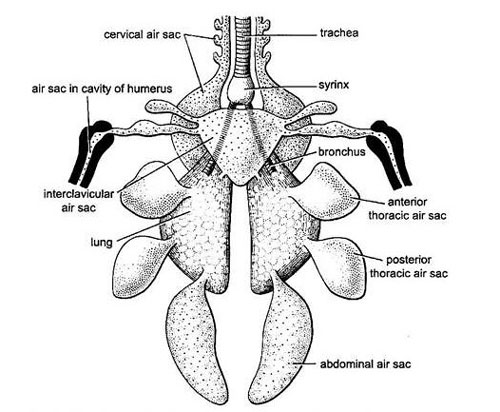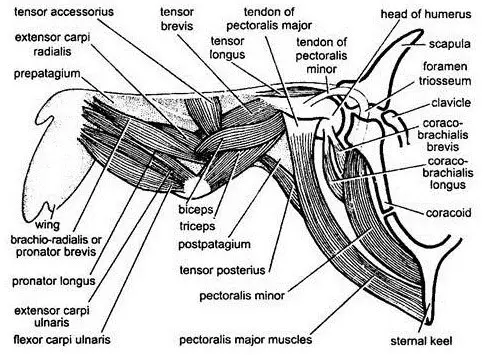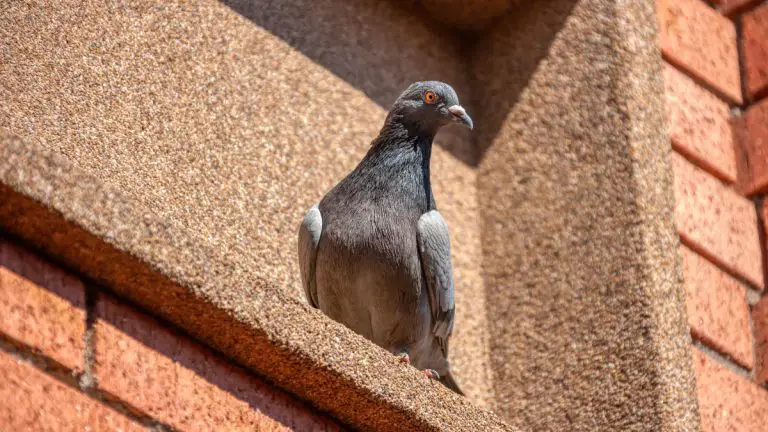The Anatomy And Physiology of Racing Pigeons
Racing pigeons have unique anatomy and physiology that allows them to excel in their sport and achieve remarkable feats of flight.
So how does the anatomy and physiology of racing pigeons consist of? The anatomy comprises the wings, the digestive system, muscles, and the respiratory system. At the same time, physiology comprises the cardiovascular system, energy metabolism, and nervous system.
However, it’s crucial to understand how every aspect of the body plays an important role in their racing operation. Ok, let’s dive in.
Introduction To Racing Pigeons
Racing pigeons, also known as homing pigeons, have been used for centuries as messengers and carriers of important information. Pigeons and homing pigeons are both members of the same species, Columba livia. However, they bred selectively for their racing ability.

So What Is It That Makes Racing Pigeons Such Incredible Animals?
The answer is their unique anatomy and physiology. Racing pigeons are built for speed, and their streamlined bodies allow them to cut through the air with ease.
The pigeon’s wingspan is another key feature that sets them apart from other birds. These birds have powerful muscles and lightweight, specialized bones that allow them to fly with ease. Their cardiovascular and respiratory systems are highly efficient.

It is capable of pumping oxygen-rich blood to their muscles during periods of intense flight and extracting more oxygen from the air to keep them going.
Physical Characteristics of Racing Pigeons
These birds have several physical characteristics that make them well-suited for their role as racing birds. Below, the different physical characteristics are discussed.

Size and Shape
They’re medium-sized birds, with an average length of around 11-13 inches (28-33 cm) and a wingspan of 28-32 inches (71-81 cm). They have a streamlined, aerodynamic shape with a small head, a long neck, and a short, curved beak.
Their wings are long and pointed, designed for both gliding and flapping flight, and their tails are short and square.
Feathers
These pigeons have soft, silky feathers that are tightly packed to keep them warm and to reduce air resistance during flight. Their feathers come in a variety of colors and patterns, including white, gray, black, blue, and red.
Eyes
They have large, bright eyes that are well-adapted for long-distance flight. Their eyes contain a high number of light-sensitive cells, which allow them to see well in low-light conditions. Also, they can see ultraviolet light, which helps them navigate by detecting patterns in the sky.
The Respiratory System of Racing Pigeons
These pigeon’s respiratory system consists of three main components-
- Respiratory tract
- Respiratory organs/lungs
- Air sacs.

Respiratory Tract
The respiratory tract is composed of the nose, trachea, and bronchi, which are responsible for carrying air into the lungs. The trachea is a tube made up of cartilage rings that prevent it from collapsing during breathing. The bronchi are two tubes that branch off from the trachea and lead to the lungs.
The Respiratory Organs Or Lungs
The respiratory organs or lungs are the primary organs for gas exchange in these birds. They are composed of so many tiny air sacs called alveoli. Here, oxygen from the air is transferred into the bloodstream, and carbon dioxide is removed.
The lungs are supported by air sacs, which help regulate the flow of air into and out of the lungs. These air sacs act like bellows, constantly moving air through the lungs and providing a continuous supply of oxygen to the body.
Air sacs
Air sacs are unique to birds and play a critical role in respiration and thermoregulation. These pigeon species have nine air sacs divided into two groups: anterior and posterior.
The anterior air sacs are located in the neck and chest, while the posterior air sacs are located in the abdominal cavity. The air sacs are connected to the lungs, and when the pigeon inhales, the air is drawn into the posterior air sacs.
When the pigeon exhales, the air is pushed into the lungs. When the pigeon inhales again, the air in the anterior air sacs is drawn into the lungs, where gas exchange occurs. When the pigeon exhales again, the air is expelled from the body.
For thermoregulation, when the pigeon is hot, the air sacs help to dissipate heat by transferring it to the air being exhaled. Conversely, when the pigeon is cold, the air sacs can help to conserve heat by retaining warmth.
The Cardiovascular System Of Racing Pigeons
Their cardiovascular system is composed of the heart, blood vessels, and blood.

The Heart
Heart is a muscular organ that pumps blood throughout the body, and in racing/homing pigeons, it is relatively larger and more powerful than in other birds. This allows for a greater stroke volume and more efficient delivery of oxygen with nutrients to the muscles.
Blood Vessels
The blood vessels of homing pigeons are also adapted to support their high-intensity flights. The capillaries that supply the muscles with oxygen and nutrients are more numerous and have a larger diameter than in other birds. This allows for greater blood flow.
The Blood
Blood of homing pigeons also plays an important role in supporting their cardiovascular system. The red blood cells in these pigeons have a high concentration of hemoglobin, which is the protein responsible for carrying oxygen. This allows for a greater oxygen-carrying capacity in the blood, which is essential for flight performance.
The Musculoskeletal System of Racing Pigeons
The musculoskeletal system is the network of bones, muscles, tendons, and ligaments that enable these birds to fly and perform various physical activities.
This system is essential for the pigeon’s ability to fly long distances at high speeds and to navigate through different terrains and weather conditions. Let’s see some of them below:

Wings
The wings of these pigeons are long and narrow, with strong flight feathers that enable them to generate lift and maintain flight for extended periods. The primary flight feathers are attached to the hand bones (metacarpals) of the wings, which are elongated to support the wings in flight.
Breast Muscles
Their breast muscles (pectoralis) are highly developed, as they are responsible for the power and endurance required for sustained flight. These muscles are attached to the keel bone (sternum) and the wing bones and contract rapidly and powerfully during flight.
Skeletal Structure:
They have a lightweight skeletal structure that is adapted for flight. Their bones are thin and hollow, with struts and reinforcing ridges that provide strength without adding weight.
The bones of the wings, for example, are fused together to form a single, rigid structure that supports the flight feathers and enables the bird to control its wingspan.
Legs And Feet
The legs and feet are also adapted for flight. The leg bones are thin and lightweight, with powerful muscles that enable the bird to launch itself into the air. The feet are large and strong, with sharp talons that enable the bird to grip and perch on a variety of surfaces.
Nutrition and Exercise for Racing Pigeons
Nutrition and exercise are both essential for their well being. Here are some important considerations for feeding and exercising your racing birds:

Nutrition
These includes:
- High-Quality Feed: These birds require a high-quality, balanced diet that provides all the essential nutrients they need. A good pigeon feed will typically include a mix of grains, seeds, and legumes, along with added vitamins and minerals.
- Protein: Protein is particularly important for homing pigeons, as it helps to build and maintain strong muscles. Good sources of protein for pigeons include peas, beans, and other legumes, as well as soybean meal and fish meal.
- Water: Clean, and fresh water should always be available to your racing birds. Dehydration can lead to poor health.
Exercise
These includes:
- Free Flight: One of the best forms of exercise for these pigeons is free flight. Allowing them to fly around for a few hours each day will help to build their strength and endurance, as well as their navigational skills.
- Loft Exercise: In addition to free flight, it’s also important to provide your pigeons with opportunities to fly within their loft. This might include installing perches at different heights or providing toys and obstacles for them to climb on and around.
- Training: Training your racing birds for races is also a form of exercising, as it involves gradually increasing the distance and duration of their flights. However, it’s important to avoid overtraining, as this can lead to injury and burnout.
Maintaining the Health and Performance of Racing Pigeons
Just like any athlete, these birds require proper care and maintenance to stay healthy and perform at their best. Here are some tips for maintaining their health and performance:

Keep the Loft Clean and Well-Ventilated
A clean, well-ventilated loft is essential for their well being and for fresh airflow. A dirty or poorly ventilated loft can lead to the spread of disease and respiratory problems. Regularly clean out the loft and remove any droppings or debris. Disinfect the loft periodically to prevent the spread of disease.
Provide Good Nutrition
A balanced diet that provides all the essential nutrients is critical for maintaining a healthy lifestyle for your racing birds. Also, make sure they have access to clean water at all times.
Monitor Weight
Keeping them at a healthy weight is crucial for their racing functions and overall well being. Regularly weigh your birds and adjust their diet and exercise routine as needed to maintain a healthy weight. Both overweight and underweight birds can have health problems and reduced performance.
Exercise Regularly
Allow your birds to fly free as much as possible, and provide opportunities for them to exercise within their loft.
Prevent Disease
Diseases can spread quickly among them, so it’s important to take steps to prevent diseases. Quarantine any new birds before introducing them to your flock. Vaccinations may also be necessary to protect against certain diseases.
Monitor Behavior
Pay attention to your pigeons’ behavior and look for signs of stress, illness, or injury. If you notice anything unusual, seek veterinary care immediately. Signs of illness can include lethargy, loss of appetite, and difficulty breathing.
The Role Of The Brain And Nervous System In Regulating Racing Pigeon Behavior And Performance
The brain and nervous system play a crucial role in regulating their behavior and actions. These pigeons can navigate over long distances, even in unfamiliar territories. Thanks to their exceptional ability to detect and process sensory information and use it to make decisions about where to go.
One of the key structures in the pigeon’s brain that are involved in navigation is the hippocampus. It is responsible for spatial memory and the ability to form mental maps. The hippocampus allows pigeons to remember their surroundings and to navigate using landmarks and other cues.
The pigeon’s brain also contains a specialized structure called the avian compass. This allows them to sense the Earth’s magnetic field and to use it to navigate. This compass is located in the eye and is thought to rely on the presence of specialized photoreceptors that are sensitive to magnetic fields.
The nervous system is also involved in regulating the pigeon’s flight behavior. Pigeons can fly at high speeds for extended periods. This is regulated by the nervous system, which coordinates the actions of the heart, lungs, and muscles. To ensure optimal oxygen delivery and energy production.
If you’re interested in learning more about pigeon racing, you might find our articles on the history of pigeon racing and the benefits of pigeon racing informative. Our article on the history of pigeon racing provides an overview of the origins, development, and evolution of this fascinating sport. Meanwhile, our article on the benefits of pigeon racing explores the physical, mental, and social advantages that participants and enthusiasts derive from this engaging activity.Final Words
Understanding the anatomy and physiology of these pigeons is crucial for the overall health and well-being of the birds. From their external features like feathers and beaks to their internal systems like respiration and digestion, every aspect of a racing pigeon’s body plays a role in its performance.
Proper training, nutrition, and care are essential for ensuring the pigeons are in top condition for racing. By following ethical practices and prioritizing the well being of these birds, you can ensure the longevity and success of the sport of pigeon racing.






